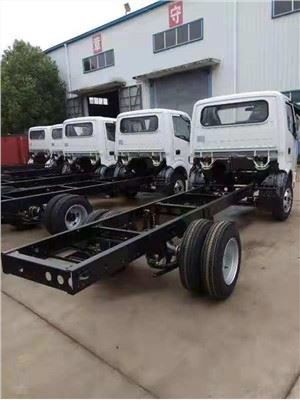Trash Sweeper: The Ultimate Guide to Keeping Your Environment Clean

Introduction
In today’s world, maintaining cleanliness and hygiene is more important than ever. From households to public spaces, efficient waste management is crucial to fostering a healthier environment. This is where trash sweepers come into play. Trash sweepers are specialized machines designed to collect litter and debris from various surfaces. They are widely used in urban areas, parks, beaches, and large commercial properties. In this comprehensive guide, we will explore everything about trash sweepers—what they are, how they work, the different types available, and practical tips for choosing the right one for your needs.
What is a Trash Sweeper?
A trash sweeper is a mechanized device used to clean outdoor spaces by collecting trash, litter, and debris. These machines come in various sizes and types, each designed to perform specific cleaning tasks efficiently. Trash sweepers can be powered by gas, electricity, or even human effort in some cases. Their primary goal is to improve cleanliness and maintain public health by removing waste from streets, sidewalks, parks, and other areas.
How Trash Sweepers Work
Trash sweepers use a combination of brushes, vacuums, and conveyor belts to collect litter from surfaces. Here’s a breakdown of how they operate:
- Brushes: Rotating brushes sweep debris towards the center of the machine.
- Vacuum System: Some trash sweepers incorporate a vacuum that sucks up finer material like dust and small pieces of litter.
- Conveyor Belt: The collected waste is transported to a storage compartment using a conveyor belt system.
- Disposal: Once the storage compartment is full, operators can empty it or dispose of the waste at designated locations.
Types of Trash Sweepers
Trash sweepers come in various types, each suited for different applications:
1. Walk-Behind Sweepers
Ideal for small areas, walk-behind sweepers are manually operated and are perfect for cleaning sidewalks, driveways, and other tight spaces. They are typically lightweight and easy to maneuver.

2. Ride-On Sweepers
For larger areas, ride-on sweepers are more efficient. Operators sit on the machine while it cleans, covering a larger surface area in a shorter time. They are commonly used in parking lots, large events, and city streets.
3. High-Pressure Sweepers
These machines come with high-pressure water jets and are used to remove stubborn grime and debris. High-pressure sweepers are often employed in industrial settings or areas where standard sweepers may struggle.
4. Street Sweepers
Street sweepers are specialized vehicles used to clean urban streets. They are larger and equipped with advanced features such as vacuum systems and dust control mechanisms.
5. Compact Sweepers
Suitable for narrow streets and crowded environments, compact sweepers are designed to navigate tight spaces while efficiently removing waste.
6. Manual Sweepers
In environments where machine operation is limited, manual sweepers can be used. These require human effort but are often more cost-effective for small-scale applications.
Benefits of Using a Trash Sweeper
Employing trash sweepers for waste collection offers numerous advantages:
1. Improved Efficiency
Trash sweepers significantly reduce the time and labor costs associated with manual cleaning. Their automated systems allow for faster collection of waste, making municipal and commercial cleaning operations more efficient.
2. Enhanced Public Health
By keeping public spaces clean, trash sweepers help prevent the spread of disease and pests, contributing to better community health.
3. Environmental Protection
Efficient waste collection helps prevent litter from entering storm drains and waterways, promoting ecological preservation and reducing pollution.
4. Aesthetic Appeal
Well-maintained environments contribute to positive community experiences. Regular use of trash sweepers enhances the appearance of neighborhoods, parks, and roads.
5. Versatility
With various models available, trash sweepers can be used in multiple settings, including urban areas, stadiums, parks, and construction sites.
Choosing the Right Trash Sweeper
Selecting the appropriate trash sweeper for your needs involves several considerations:
1. Area Size
Assess the size of the area that requires cleaning. For larger commercial spaces, ride-on or street sweepers may be the best choice, while walk-behind models are suitable for smaller areas.
2. Type of Waste
Consider the type of litter and debris you typically encounter. For instance, high-pressure sweepers are better for stubborn grime, while compact models may be suitable for sidewalks and parks.
3. Budget

Evaluate your budget. While investing in a higher-quality machine may yield better results, there are more affordable options for smaller operations.
4. Maintenance Requirements
Understand the maintenance needs of each machine. Some sweepers may require regular servicing and repairs, which can impact long-term operational costs.
5. Environmental Considerations
Look for trash sweepers that incorporate green technologies and dust control systems to minimize environmental impact.
Practical Examples of Trash Sweeper Use
Various industries and sectors benefit from using trash sweepers. Here are some practical examples:
1. Municipal Parks
Parks maintain a high visitor count. Municipalities often employ ride-on sweepers to keep these areas clean, ensuring they remain inviting and safe for families and children.
2. Commercial Properties
Shopping malls and large retail stores utilize walk-behind sweepers to maintain cleanliness in parking lots and pathways, enhancing the shopping experience for customers.
3. Beaches
Beach resorts often deploy specialized sweepers to collect trash washed ashore or left by visitors, maintaining the beauty of the coastline.
4. Construction Sites
Construction companies use high-pressure sweepers to clear dust and debris, ensuring a safe working environment and reducing the risk of accidents.
Maintenance Tips for Trash Sweepers
Proper maintenance of trash sweepers ensures they operate efficiently and prolongs their lifespan:
1. Regular Inspections
Perform frequent inspections to check for worn-out brushes, belts, and other components that may need replacement.
2. Cleaning After Use
Always clean the machine after use to prevent dirt and debris buildup, which can hinder performance.
3. Lubrication
Lubricate moving parts regularly to reduce friction and wear, ensuring smooth operation.
4. Follow Manufacturer Guidelines
Adhere to the maintenance schedule and operational guidelines provided by the manufacturer to maintain optimal performance.
5. Store Properly
When not in use, store sweepers in a climate-controlled environment to prevent damage from weather conditions.
FAQ
1. How often should I use a trash sweeper?
The frequency of use depends on the area being cleaned. High-traffic areas may require daily sweeping, while less frequented spaces could be cleaned weekly.
2. How can I ensure the trash sweeper is environmentally friendly?
Choose models that feature dust control systems, low-emission engines, and efficient waste recycling systems to minimize environmental impact.
3. Are there any safety precautions to consider while operating a trash sweeper?

Always ensure the operator wears appropriate safety gear, follow traffic regulations when cleaning streets, and maintain awareness of surrounding pedestrians and vehicles.
4. Can I rent a trash sweeper for short-term projects?
Yes, many equipment rental companies offer trash sweepers for short-term projects, which can be an economical solution for occasional clean-up tasks.
5. How much does a trash sweeper cost?
The price of a trash sweeper varies widely based on the model and features, ranging from a few hundred to tens of thousands of dollars. Consider your cleaning needs and budget before making a purchase.
6. Can trash sweepers be used on all surfaces?
Most trash sweepers can be used on various surfaces; however, specific models may be better suited for certain materials, such as pavement, gravel, or grass.
